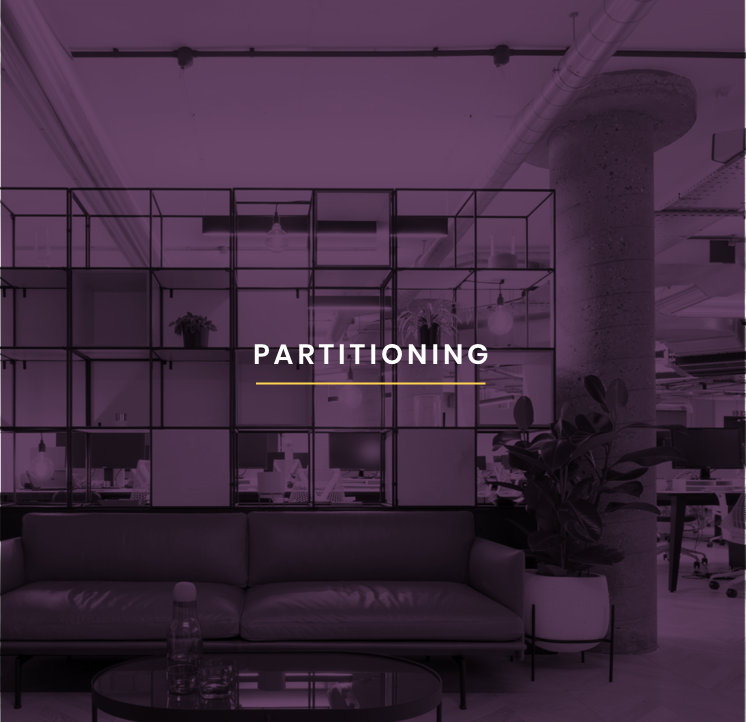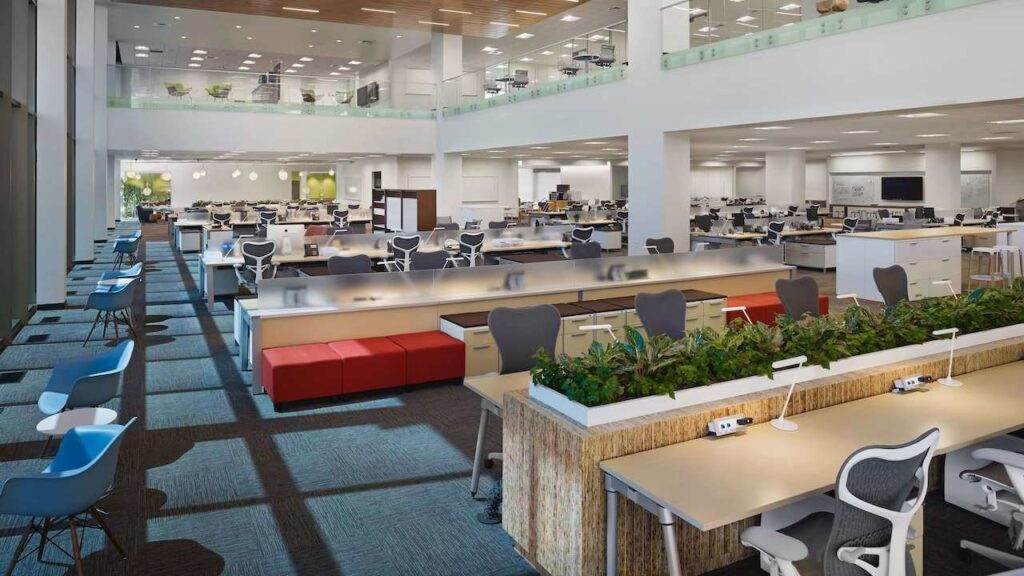The physical workspace is the one we can see, touch, taste, and smell. It’s the art that hangs on the walls, the office floor plan, the demographics of the people we work with (old, young, diversity, etc), and any physical perks we might get such as catered meals in a beautiful cafeteria, an on-site gym, or a lounge area that employees can use to unwind a bit. Before reading on think for a minute about your physical workspace and how it makes you feel. Do you get excited and energised or do you feel as if you are walking into the dentist’s or doctor’s office?

Why should organisations invest in creating physical spaces that employees want to show up to?
Well, the answer seems like it should be common sense. For starters employee, well-being is strongly correlated to employee productivity and performance and even a small shift in well-being can have a dramatic impact. Perhaps one of the largest factors of well-being is the physical workspace. Employees who enjoy and like the environments they are a part of will be more engaged, productive, happy, and healthy. There are numerous reports, indices, and studies such as Gensler’s Workplace Index, The Leesman Index, Steelcase, and others that explore the relationship between the physical space and business performance metrics, productivity, and what employees value. So, what should organisations be doing and thinking about?
Focus on multiple ways of working
Gensler identified four key areas that need to be available for employees which are spaces to Focus, Collaborate, Learn, and Socialise.
This isn’t just about an open floor plan or a cubicle, it’s about giving employees multiple modes of working. The most progressive offices don’t have a single floor plan, they have multiple. Consider SAP which has an open environment, cubicles, a collaborative innovation hub, a co-working cafe, conference rooms, smaller meetings rooms, and areas for presentations. Linkedin, Cisco, Airbnb, and many other organisations have similar environments. So, the key is to shift away from having a single floor plan to integrating and incorporating multiple floor plans.
Make the space reflect the culture
Cisco is a global technology company so it’s no surprise that their offices are quite technologically advanced. While Cisco maintains a mostly open plan, they are working on capabilities that allow any employee to show up to a desk or conference room and have that space adapt to them. In other words, the temperature, lighting, and even the employee’s contacts and work information are magically beamed to whatever location they are working from. Pandora, the internet radio streaming company art throughout their offices that reflect their love of and passion for music. Again, the key with both of these examples is that the investments these companies are making reflect the values and culture of the organisation. They are not just throwing around bean bags, table tennis tables, and cool-looking art just for the sake of doing so, these are strategic investments.
Look at how employees work
At Mars Drinks, they used sensors on employee desks to find out how often they are used. Over time the company realised that employees don’t really work much at their desks, they move around, go to conference rooms, find quiet areas, and prefer to work from other spaces besides their desks. As a result, both companies completely redesigned their facilities to accommodate this. You can see the Mars Drinks redesign here, it’s beautiful and most importantly strategically designed based on how employees prefer to work. Of course, you don’t have to utilise sensors on all the desks at your company, you can simply ask employees what they value and care about and make investments in those areas.
Treat physical space like software
In software, you iterate, make changes, upgrade, and evolve. The physical space needs to be thought of in the same way. If you are a large company, you should constantly be experimenting and testing new office layouts and environments until you find the best layout and environment for your employees to be productive.
Treat physical space like software
In software, you iterate, make changes, upgrade, and evolve. The physical space needs to be thought of in the same way. If you are a large company, you should constantly be experimenting and testing new office layouts and environments until you find the best layout and environment for your employees to be productive.
For more information about our services, whether you’re looking for commercial office design or a complete fit out, simply contact us today. – Our team are on hand and happy to help.





